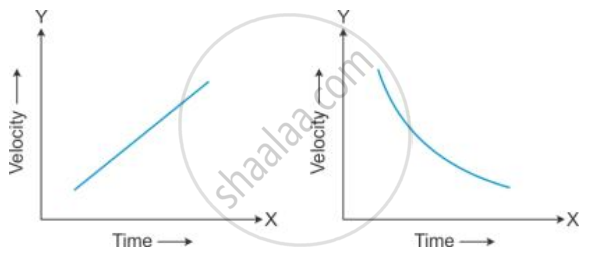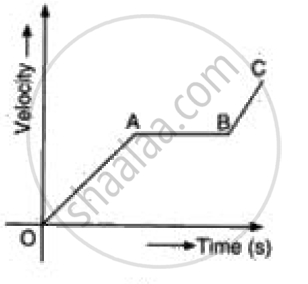Advertisements
Advertisements
प्रश्न
A bus can accelerate with an acceleration of 1 m/s2 . Find the minimum time for the bus to attain the speed of 100 km/s from 50 km /s.
उत्तर
Acceleration of the bus (a) = 1 m/s2
Initial velocity (u) = 50 km/s = 50 x 103 m/s
Final velocity (v) = 100 km/s = 100 x 103 m/s
time (t) = ?
`"t "= ("v"-"u") /"t"= (100xx10^3 - 50xx10^3)/1 = ((100-50)xx10^3)/1`
t = 50 × 103 s
APPEARS IN
संबंधित प्रश्न
Give a scientific reason.
When an object falls freely to the ground, its acceleration is uniform.
Give one example of the following motion:
Uniform retardation
A body is moving vertically upwards. Its velocity changes at a constant rate from 50 m s-1 to 20 m s-1 in 3 s. What is its acceleration?
State the type of motion represented by the following sketches in Figures.

Give an example of each type of motion.
If a body is moving with a constant velocity its acceleration is ______.
Draw velocity – time graph for the following situation:
When a body is moving with variable velocity and variable acceleration.
A racing car is moving with a velocity of 50 m/s. On
applying brakes, it is uniformly retarded and comes to rest in 20 seconds. Calculate its acceleration.
From the velocity – time graph given below, calculate deceleration in region BC.

A motorbike, initially at rest, picks up a velocity of 72 kmh−1 over a distance of 40 m. Calculate
- acceleration
- time in which it picks up above velocity.
A truck running at 90 kmh−1, is brought to rest over a distance of 25 m. Calculate the retardation and time for which brakes are applied.
Distinguish between uniformly and non-uniformly accelerated motions.
Interpret the following graph:
What happens to the stepwise increasing speed-time graph when the size of each step is made very small?
A car accelerates to a velocity of 30 m/s in 10 s and then decelerates for 20 s so that it stops. Draw a velocity-time graph to represent the motion and find:
Distance travelled
What do you understand about negative acceleration?
Exercise Problem.
A racing car has a uniform acceleration of 4 ms–2. What distance it covers in 10 s after the start?
What is meant by negative acceleration?
It is possible to have objects moving with uniform speed but variable acceleration.
